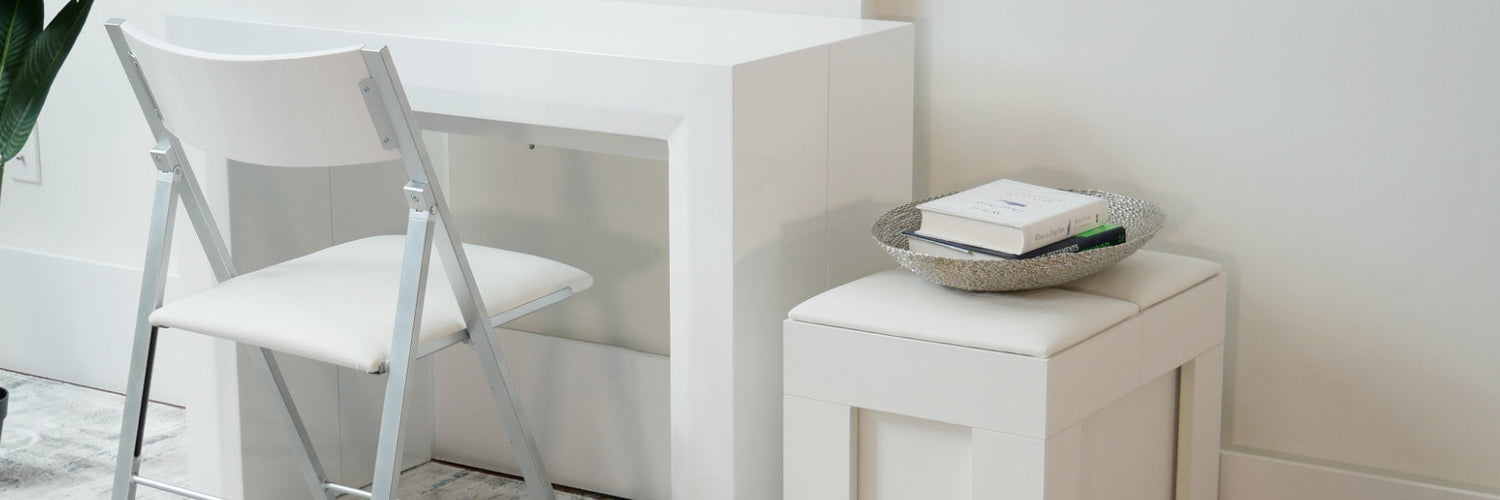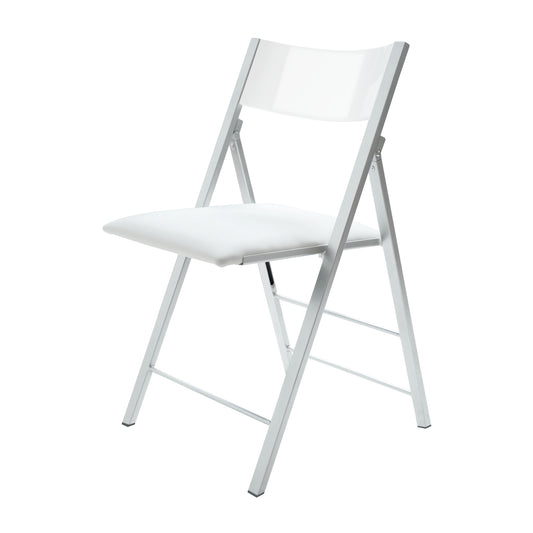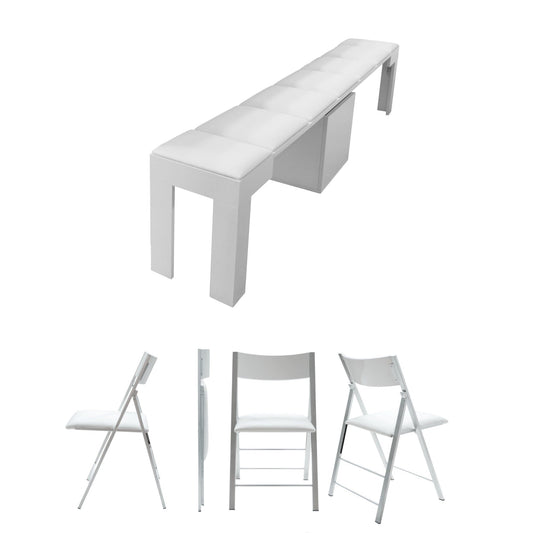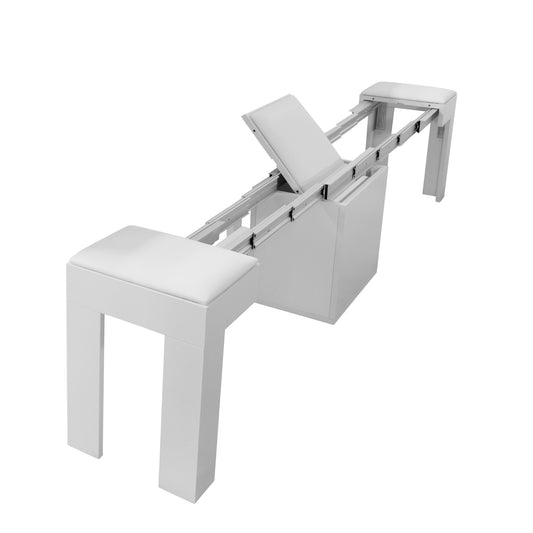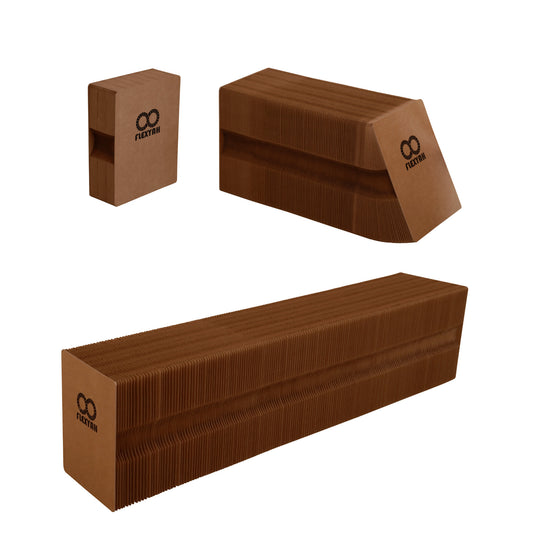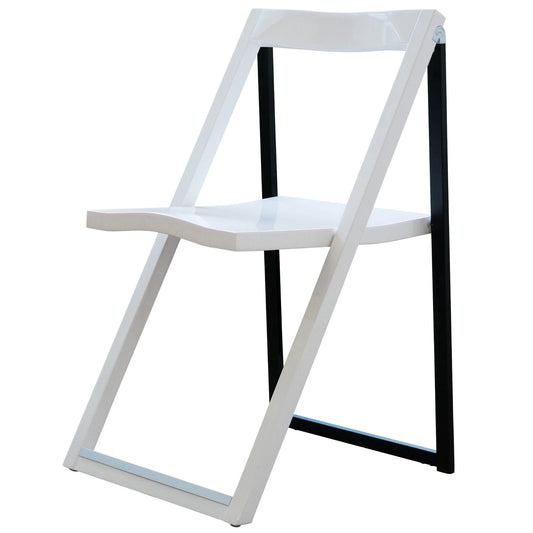Have you ever wondered why hardwoods like Mahogany cost more than Oak, or why you’ll find outdoor furniture made from Teak but Cherry wood is less common? The price and use come down to how rare the wood is meaning it can only grow in specific regions or has a slower growing cycle, and how durable the wood is for specific uses like load bearing or how the grain helps it stand up to damage and moisture.
That’s what you’ll learn in the guide below. We cover 8 of the most popular types of hard and softwoods used in furniture, the types of furniture they’re best for, how and why they are priced at different levels, with some fun facts about each.
The Most Common Types of Wood for Furniture
Hardwoods are prized for their strength, longevity, and timeless appeal as they look great and can last for generations making them heirloom pieces, and softwoods are perfect as they're readily available, easy to work with, and affordable. And there’s a few species that are the most popular types of wood for furniture including:
- Oak
- Maple
- Walnut
- Cherry
- Mahogany
- Birch
- Teak
- Ash
Each of these woods offer distinct characteristics in terms of color, grain, durability, and cost. To make it easy if you’re stuck between two or three, we break down what each type of wood is good for furniture wise, share alternatives to it, and have a comparison table at the end of this post. This way you'll find which type of wood is the right choice for your furniture needs.
Oak
The two types of Oak (red and white) are some of the most widely used hardwoods in furniture making because of their strength, durability, and distinctive grain patterns. Oak is commonly used in dining tables, bed frames, cabinets, desks, and flooring due to its resilience and ability to handle daily wear and tear.
The two types of oak used specifically for furniture are:
- Red oak, the more affordable one ranging from $3–$6 per board foot, has a warm, pinkish undertone and a bold, open grain, making it widely used in traditional and rustic-style furniture.
- White oak, which is more expensive at $4-$8 per foot, is denser, more water-resistant, and has a tighter, more refined grain, making it better suited for high-end furniture. Because it is better for water and moisture resistance, white oak is used more often for outdoor or mission-style furniture pieces.
Fun Fact: White oak is the wood of choice for wine and whiskey barrels due to its watertight grain.
Oak is abundant across North America, Europe, and parts of Asia and North Africa which is why it remains one of the most in demand and affordable hardwoods. However, oak’s weight and hardness make it more difficult to machine and more expensive to ship, adding to production costs.
Oak is less suitable for delicate or lightweight furniture, as its high density makes smaller pieces unnecessarily heavy and difficult to move. Additionally, its coarse, open grain limits the precision required for intricate carvings or fine decorative details.
Alternative Woods to Oak
A more affordable alternative is Birch as it has a similar light color and durability, and birch is less expensive. Birch does not have the prominent grain, so if that is important to you, stick with Oak. A more expensive alternative is Walnut because it offers a deeper color and a richer grain (but is significantly pricier).
Maple
Maple is a popular hardwood known for its strength, smooth grain, and pale, uniform color and is readily accessible as it grows in the USA, Canada, Europe, and parts of Asia. It’s used in kitchen cabinets, butcher blocks, dressers, tabletops, and other high-traffic furniture where durability to stand up to scratches while having a clean look are the priorities.
There are two main types used in furniture:
- Hard maple (also known as sugar maple) is extremely dense and resistant to wear, dents, and scratches. It’s ideal for heavy-use furniture like dining table sets, countertops, and cabinetry.
- Soft maple is slightly less dense but easier to machine and more affordable. It has a similar appearance to hard maple and is used in mid-range furniture, painted pieces, or items with curved details because it is easier to cut and form.
Maple is not ideal for highly detailed carvings or ornate trim, as it can be challenging to shape by hand compared to more pliable hardwoods like cherry.
Fun Fact: Maple is used in musical instruments and cutting boards due to its hardness and smooth surface.
Hard maple averages $5 - $9 per square foot, while soft maple is typically $4 -$8 per square foot. Maple furniture prices fluctuate based on several factors as:
- Hard maple is more expensive to mill.
- They are slow-growing trees which limit the supply.
- Maple takes paint and stain well, boosting its value in custom work.
Alternative Woods to Maple
A more affordable alternative is birch as birch has a similar light tone and strength, but is less expensive and slightly easier to work with. A more expensive alternative is cherry which has a smoother grain and richer color that deepens over time, but comes at a higher cost.
Walnut
Walnut is a premium hardwood loved for its deep, rich tones and distinctive grain, which ranges from straight to highly figured patterns. The heartwood (the central portion) ranges from a dark chocolate brown to purplish hues, and has a natural luster that requires minimal finishing. It’s a top for high-end furniture, custom cabinetry, headboards, desks, and heirloom-quality pieces.
There are two main types used in furniture:
- Black Walnut (Juglans nigra) is the most valued species known for its dark, bold color and fine grain.
-
English Walnut is lighter in tone, more commonly used for decorative veneers, and often preferred for contrast or inlaid work.
Fun Fact: Walnut trees release juglone, a chemical that stops the growth of nearby plants. This is one reason you rarely see other trees thriving close to a walnut grove.
Walnut isn’t well suited for lightweight or utilitarian pieces like garage workbenches or children’s playroom furniture as the high cost outweighs practical benefits. It’s also a bad choice for outdoor furniture use unless it is properly sealed since walnut lacks the natural oils and weather resistance found in woods like teak or white oak.
Even though it grows across North America, Europe, Asia, and Middle Eastern countries like Iran and Turkey, it isn’t as prevalent as Oak making it more expensive as the tree needs rich, well-drained soils.
Walnut typically ranges from $8–$14 per board foot and commands a premium price due to:
- Walnut trees grow slowly and they are harvested selectively to preserve sustainability.
- The heartwood (the most desirable part) makes up a smaller portion of the tree compared to other species.
- Regional availability, shipping distances, and market demand drive prices higher, especially for wide, clear boards.
Alternative Furniture Woods to Walnut
A more affordable alternative is cherry, which offers a similarly smooth texture and refined appearance with a warmer red tone that deepens over time. Teak is a more expensive luxury alternative, and teak is even pricier due to its density, oil content, and exceptional outdoor durability.
Cherry
Cherry is a classic favorite in fine furniture making, known for its smooth texture, warm reddish hues, and graceful aging process. Freshly cut, it appears light pinkish-brown to soft red, but over time it darkens into a rich, deep red. Its refined appearance and workability make it a top choice for dining tables, bedroom sets, cabinets, desks, and heirloom-quality furniture, especially in Shaker, Colonial, Queen Anne, and transitional styles.
It is not ideal for outdoor furniture, because it lacks the natural oils needed to withstand moisture and UV exposure. Prolonged sun exposure can cause blotching or uneven darkening if not correctly protected. While cherry is moderately strong, it’s softer than maple or oak and more prone to dents and scratches in heavy-use or kid-friendly environments.
Cherry trees are native to North America and also grow across Europe and parts of Asia, thriving in temperate zones with well-drained soil.
Fun Fact: Fresh cherry wood gives off a sweet, fruity aroma when milled.
Cherry furniture typically falls into the mid-to-high price range, with a range from $6-$10 per square foot, though wide, clear boards for premium furniture may cost more. There are several things that influence the cost of Cherry wood including:
- The prized red heartwood makes up only a small portion of younger cherry trees. Only older, larger trees yield enough heartwood for wide boards, raising both material and harvesting costs.
- Cherry trees grow to smaller diameters than oak or maple, so wide, clear boards, especially for tabletops, cabinetry doors, or long panels, are rare and expensive.
- Because of the size of the heartwood, uniform color in the furniture costs more.
- While cherry is easy to shape and finish, it is photosensitive, prone to surface staining, and can develop color mismatches during drying. This requires extra care in handling, drying, and finishing, also adding to labor costs.
- Cherry matures more slowly than many softwoods, limiting supply and contributing to higher market value.
Alternatives to Cherry Wood
As an alternative, soft maple provides a smooth texture and light tone at a lower cost, especially for painted or stained finishes. A more expensive alternative is walnut which offers a darker, more dramatic grain and commands a higher price due to limited availability and slower growth.
Mahogany
Mahogany is a hallmark of luxury in furniture design, renowned for its deep reddish-brown color, fine straight grain, and natural luster that deepens beautifully with age. Its rich tones and smooth finish make it a top choice for formal dining sets, executive desks, bookcases, and cabinets.
Mahogany’s resistance to warping, shrinking, and swelling from the straight grain and stability makes it ideal for cabinetry, doors, and upscale interiors, especially in humid climates. Unless sealed and maintained regularly, mahogany can be vulnerable to sun and moisture exposure, so it is not ideal for outdoor furniture.
Mahogany is also moderately hard but not as impact-resistant as oak or maple, making it less suitable for pieces prone to heavy use, bumps, or abrasion.
Fun Fact: Mahogany is also a favorite in the music world. Its tonal richness and resonance make it a popular choice for crafting guitars, pianos, and drum shells.
Mahogany furniture ranges from mid-tier to premium in price at $10–$14 per board foot, and the price fluctuates based on:
- It being Genuine Honduran (or South American) mahogany which is considered the highest quality. It is also the most expensive due to limited supply and strict export regulations. African mahogany is generally more affordable, though slightly different in its density and tone.
- Mahogany trees grow slowly (often taking decades to reach maturity), and this slow growth, combined with strong demand, significantly increases the cost, especially for large, clear boards prized in fine furniture. Natural regeneration is challenging, and reforestation efforts face setbacks due to the mahogany shoot-borer, a pest that attacks young saplings and hinders healthy growth.
- Due to past overharvesting and illegal logging, responsibly sourced, FSC-certified, or plantation-grown mahogany is now the preferred choice, and these sustainable options often come at a premium.
It is primarily grown in tropical regions, including Central and South America, the Caribbean, Africa, and Southeast Asia. This can make it hard to find, cut down, and transport which increases its costs.
Alternative Woods to Mahogany
A less expensive alternative is Sapele or African mahogany, which provides a similar appearance and is widely used in place of true mahogany at a lower cost. A more expensive alternative is teak or white oak which may be pricier or somewhat equal in cost, but offer greater durability, especially for outdoor or marine use due to their natural oils and tight grain.
Birch
Birch is a durable, budget-friendly hardwood with a pale, creamy color and fine, even grain. It is used as a cost-effective substitute for maple and is similar in strength with a clean appearance, but at a lower price point.
Birch is commonly used in bookcases, shelving, dining tables, built-ins, children’s furniture, and kitchen cabinetry. While not as hard as maple or oak, birch is tough, stable, and resistant to warping.
Birch is not naturally rot or moisture-resistant and will degrade quickly if exposed to weather, so it is not ideal for outdoor furniture. While birch accepts paint well, it’s prone to blotching when stained, making it more challenging to achieve a rich, even color. This requires pre-treatment or gel stains, which may increase labor time and cost. Birch is also moderately hard but not as tough as maple or oak.
Fun fact: Birch is used for tool handles and sports gear thanks to its shock resistance.
Birch grows widely throughout North America, Europe, and Asia, especially in cool, temperate climates. In North America, yellow birch and sweet birch are the most commonly used species for furniture.
Birch typically ranges from $2.50–$5.00 per board foot and the price can change because:
- These trees are abundant in North America.
- Higher-grade birch costs more due to minimal defects.
- While easy to work with, birch requires careful staining to avoid blotching, which can add labor costs depending on the finish.
- Birch remains popular in mass-market, ready-to-assemble, and custom cabinetry, meaning demand influences pricing, especially during housing or renovation booms.
- FSC-certified birch from managed forests may carry a slightly higher cost due to eco-audits and traceability requirements.
Wood Alternatives to Birch
A less pricey alternative is Poplar. It is lighter, easier to machine, and even more budget-friendly, though less durable and more prone to dents. A more expensive alternative is hard maple, because it offers greater hardness and uniformity but at a higher price, especially for custom finishes.
Teak
Teak is considered one of the most durable and weather-resistant hardwoods in the world, making it the gold standard for outdoor furniture and luxury interiors. Its high natural oil content offers superior resistance to moisture, insects, rot, and decay, which eliminates the need for chemical sealants. Freshly milled teak displays a warm golden to medium brown tone that gracefully weathers to a silver-gray patina over time when exposed to the elements.
Common uses for teak in furniture include:
- Patio sets, lounge chairs, and garden benches
- Outdoor dining tables and bar carts
- Indoor dining tables, buffets, and cabinetry
- Flooring, countertops, and bathroom vanities
- Luxury yacht furnishings and spa furniture
Fun Fact: Teak naturally ages to a silver-gray patina but can be oiled to retain its golden hue.
The premium price tag makes it cost-prohibitive for mass-market or everyday furniture. Its density and oil content also make it difficult to machine or carve with fine detail. Teak grows naturally in South and Southeast Asia and is also cultivated on plantations in Africa and Latin America.
Teak sits at the top tier of hardwood pricing at $20–$35 per board foot with multiple factors influencing its cost including:
- The slow-growing pace and its scarcity.
- It’s difficult to machine due to density and oil content.
- Teak’s popularity for both indoor and outdoor luxury furniture keeps demand high.
- Teak’s native sources in Southeast Asia, especially Myanmar, have been heavily affected by overharvesting and illegal logging. FSC-certified teak adds cost.
Wood Alternatives to Teak
A more affordable alternative is Iroko (African teak). It offers similar durability and color at a lower price. A more expensive alternative is premium-grade old-growth teak from Southeast Asia, which can reach even higher prices than standard plantation-grown stock.
Ash
Ash is a strong, resilient hardwood known for its light, neutral color and open grain, which closely resembles white oak. With tones ranging from pale beige to light brown, ash is perfect for interiors due to its clean, natural appearance. It combines excellent shock resistance with workability, making it ideal for both structural and decorative furniture pieces.
Uses for ash wood include:
- Dining chairs and benches
- Rockers and bar stools
- Curved chair backs and bentwood frames
- Tabletops and bed frames
- Cabinets and open shelving
Ash lacks the natural oils and decay resistance of teak or white oak, making it unsuitable for the outdoors without extensive sealing. Its coarse grain and open texture also make ultra-fine detailing or ornate traditional designs difficult. While ash stains well, its open pores may telegraph through painted surfaces, making smoother woods like maple or poplar better choices for painted furniture.
Fun Fact: Ash is used for baseball bats and bentwood furniture thanks to its strength and flexibility.
Ash trees grow across North America, Europe, and Asia, thriving in well-drained, temperate forests. However, ecological challenges have reshaped its availability so ash can cost between $5-$9 per board foot.
The price of ash wood varies for the following reasons:
- In North America, the emerald ash borer has decimated ash populations, drastically reducing the supply of domestic ash and driving up prices.
- These trees are threatened by the emerald ash borer, which has limited the supply. Many ash trees have been cut early to salvage usable wood before infestation damage, reducing the availability of mature, high-quality lumber.
- There is a high demand for ash as a substitute for oak and maple.
- Imported ash adds to the cost.
- Ash’s vulnerability to pests and disease has made forest management essential. FSC-certified and reforested sources come at a premium.
Alternative Woods for Ash
An alternative to ash is birch which offers a similar light color and good strength at a lower price, though it lacks the same flexibility and impact resistance. A more expensive alternative is White oak which provides enhanced durability and water resistance but at a higher price point, particularly for wide, clear boards.
Understanding the unique characteristics and pricing drivers of different wood types can help you choose furniture that fits your aesthetic, budget, and long-term needs. From sustainability and workability to grain pattern and supply, these factors influence both the beauty and cost of each piece.
Whether you’re selecting materials for a custom project or shopping for investment furniture, knowing your woods makes all the difference. Here’s our table to help you make the choice between them easy.
The Types of Furniture Hardwoods Compared
|
Oak |
Maple |
Walnut |
Cherry |
Mahogany |
Birch |
Teak |
Ash |
|
|
Cost |
||||||||
|
Mid Range Cost |
X |
X |
X |
X |
||||
|
Premium |
X |
X |
X |
X |
||||
|
Durability |
||||||||
|
Highly Durable |
X |
X |
X |
X |
X |
|||
|
Moderately Durable |
X |
X |
X |
|||||
|
Where It Grows |
||||||||
|
United States |
X |
X |
X |
X |
X |
X |
||
|
Canada |
X |
X |
X |
X |
X |
X |
||
|
Mexico |
X |
|||||||
|
Europe |
X |
X |
X |
X |
X |
|||
|
Central America |
X |
X |
||||||
|
South America |
X |
X |
||||||
|
Asia |
X |
X |
X |
X |
X |
X |
X |
X |
|
Africa |
X |
X |
X |
|||||
|
Carribean |
X |
|||||||
|
Interior Design Aesthetic and Style |
||||||||
|
Contemporary |
X |
X |
X |
X |
X |
X |
X |
|
|
Transitional |
X |
X |
X |
X |
X |
X |
X |
|
|
Traditional |
X |
X |
X |
|||||
|
Craftsman |
X |
X |
||||||
|
Mission |
X |
X |
||||||
|
Farmhouse |
X |
|||||||
|
Rustic |
X |
X |
X |
X |
X |
|||
|
Mid-Century Modern |
X |
X |
X |
|||||
|
Shaker |
X |
X |
X |
|||||
|
Colonial |
X |
X |
X |
|||||
|
Early American |
X |
|||||||
|
Modern |
X |
X |
X |
X |
||||
|
Cottage |
X |
X |
||||||
|
Formal |
X |
X |
||||||
|
Art Deco/Art Nouveau |
X |
X |
||||||
|
Luxury |
X |
|||||||
|
Federal |
X |
|||||||
|
Victorian |
X |
|||||||
|
Scandinavian/Nordic |
X |
X |
X |
|||||
|
Tropical |
X |
|||||||
|
Minimalist |
X |
|||||||
|
Natural |
X |
|||||||
|
Outdoor |
X |
|||||||
|
Used For |
||||||||
|
Dining Tables/Sets |
X |
X |
X |
X |
X |
X |
X |
|
|
Accent Tables |
X |
X |
||||||
|
Coffee Table |
X |
|||||||
|
Chairs |
X |
X |
||||||
|
Headboards |
X |
X |
||||||
|
Bed Frames |
X |
X |
X |
|||||
|
Nightstands |
X |
|||||||
|
Dressers |
X |
X |
||||||
|
Armoires |
X |
|||||||
|
Cabinets |
X |
X |
X |
X |
X |
X |
X |
X |
|
Counters |
X |
|||||||
|
Desks |
X |
X |
X |
X |
||||
|
Bookcases |
X |
|||||||
|
Children’s Furniture |
X |
|||||||
|
Benches |
X |
X |
||||||
|
Panel Furniture |
X |
X |
||||||
|
Shelves |
X |
X |
||||||
|
Outdoor furniture |
X |
|||||||
|
Patio Sets |
X |
|||||||
|
Lounge Chairs |
X |
|||||||
|
Bar Cart |
X |
|||||||
|
Bar Stools |
X |
|||||||
|
Buffets |
X |
|||||||
|
Bathroom Vanities |
X |
|||||||
|
Spa Furniture |
X |
|||||||
|
Rockers |
X |
|||||||
